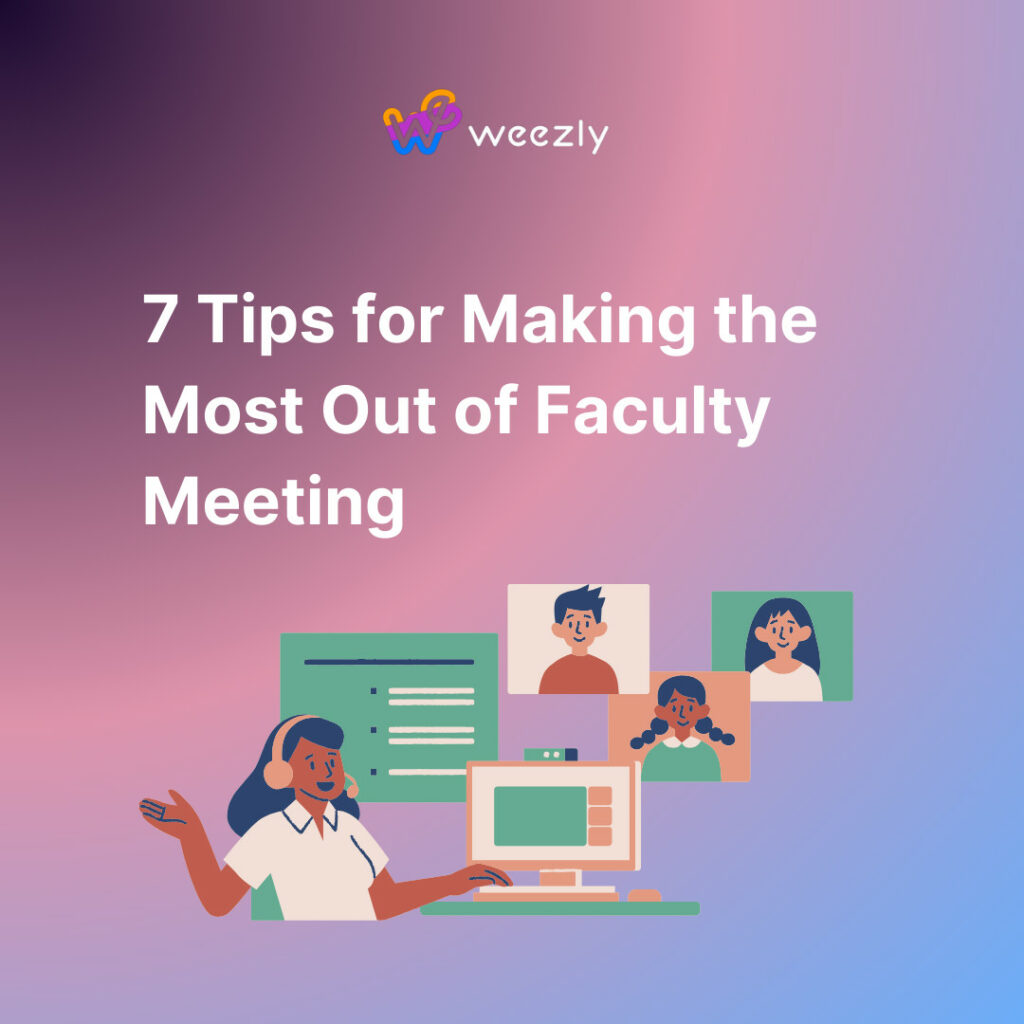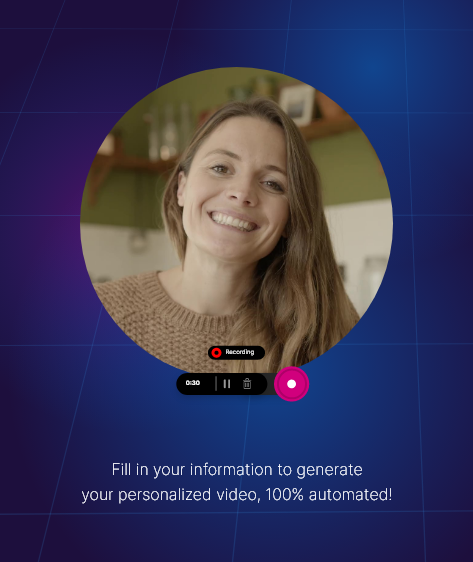Faculty meeting is a staple in educational settings.
Whether you’re at a large university or a small high school, these gatherings offer valuable opportunities for collaboration, information dissemination, and professional growth. However, they can also be lengthy, repetitive, and at times, a tad bit unproductive.
If you’ve ever left a faculty meeting feeling drained or unsure of its purpose, you’re not alone. By implementing some strategic approaches, you can ensure that every meeting you attend or lead is fruitful. Here are seven tips to help you make the most of faculty meetings.

The Significance of Productive Faculty Meetings
Faculty meetings are a consistent feature in the academic landscape. They serve as a pivotal space where educators, administrators, and staff come together to discuss, strategize, and align their visions for the institution’s future. These gatherings can be powerful catalysts for change, fostering innovation, and facilitating collaborative efforts.
However, just like any other meeting, their effectiveness is often a matter of execution. A well-conducted faculty meeting can invigorate and inspire, leading to actionable outcomes that benefit both educators and students. On the flip side, an aimless or poorly managed meeting can drain energy and time, leaving participants feeling frustrated or disengaged.
With the importance of these meetings in mind, how can educators and administrators ensure that they’re consistently effective and worthwhile? In this blog post, we’ll delve into seven actionable tips that can elevate your faculty meetings, making them more purposeful and productive. Whether you’re a seasoned educator or new to the profession, these strategies can help you contribute to and lead meetings that truly make a difference.
7 Tips for Effective Faculty Meetings
#1 Come Prepared
Before the meeting starts, ensure you’re well-prepared. This might seem like a given, but the number of attendees who walk into meetings without any preparation can be staggering.
- Review the agenda: Familiarize yourself with the topics to be discussed. This will help you formulate your thoughts and contributions beforehand.
- Gather your materials: Whether it’s a report, a presentation, or simply notes, have them ready. Being prepared shows professionalism and respect for others’ time.
A study from Harvard Business Review emphasizes the importance of preparation for any business meeting. The same principles apply to faculty meetings.
#2 Engage Actively
Active engagement doesn’t mean you need to dominate the conversation. It’s about being present, attentive, and contributing when it adds value.
- Ask pertinent questions: This shows you’re attentive and can help clarify points for everyone.
- Take notes: Jot down important points, action items, or follow-up tasks.
According to Forbes, engagement is a clear indicator of interest and involvement. Engaging actively can make the difference between a productive meeting and a wasted hour.

#3 Promote a Positive Environment
A positive environment can make attendees feel more comfortable sharing their thoughts and opinions.
- Be respectful: Always listen when others speak and avoid interrupting.
- Encourage others: A simple “That’s a great point!” can boost morale.
Dr. John Smith from The Education Journal found that positive environments lead to more productive meetings and foster creativity and collaboration.
#4 Stay on Topic
It’s easy for meetings to veer off track, especially when passionate educators are involved. Keep discussions focused on the agenda.
- Avoid personal anecdotes: Unless they’re directly relevant.
- Politely steer back: If the conversation drifts, it’s okay to say, “Let’s get back to the main topic.”
An article from Meeting Science Magazine reveals that meetings that stick to their agenda are 34% more productive than those that don’t.
#5 Follow Up Post-Meeting
The meeting shouldn’t end when everyone leaves the room. Following up can ensure that the discussions lead to action.
- Review your notes: This will refresh your memory on what was discussed and what needs to be done.
- Communicate with colleagues: If you promised to provide information or take on a task, make sure to do so promptly.
Business Insider reported that follow-up is a crucial step many professionals neglect, leading to lost opportunities and unmet objectives.
#6 Offer Constructive Feedback
If you have ideas on how to improve the meetings, don’t hesitate to share them.
- Be specific: Instead of saying “This meeting was too long,” you might suggest, “Can we allocate specific time limits to each agenda item?”
- Use “I” statements: This reduces the chance of sounding accusatory.
Feedback, when delivered constructively, can lead to significant improvements in the way faculty meetings are conducted, as highlighted by a study in Educational Leadership Quarterly.
#7 Embrace Technology
Using technology can make meetings more efficient. Whether it’s using digital tools for note-taking or apps for time management, embrace the tech available to you.
- Explore apps: Tools like Easynote, Trello, or Asana can help with task management post-meeting.
- Use collaborative platforms: Google Docs or Microsoft Teams can be invaluable for real-time collaboration.
A TechCrunch article noted how educational institutions that embraced technology reported more streamlined and productive meetings.
Technological Assistance:
Another tactic is using Artificial Intelligence (AI) assistants or software that automate tasks, saving precious preparation time and freeing you to focus on core discussion points. AI scheduling software such as Clara allows personalized yet automated calendar invites and follow-ups.
SEE MORE: Dive deeper into Clara’s prospects.
Video conferencing:
Video conferencing tools play a vital role in virtual faculty meetings. Here, we’ve put together some guidelines to ensure the smooth execution of video calls in any setting, courtesy of current giants of appointment booking software – Weezly, Bookafy, and Setmore.
- Punctuality matters. Run through this guide on how to set multiple reminders.
- Be mindful of others’ schedules. This system gives you ease while making group plans by eliminating numerous back-and-forth emails
- Don’t ignore tech glitches. Tune into tutorials that aid troubleshooting – here’s a Microsoft Booking tutorial for beginners!

Faculty Meeting: Conclusion
Faculty meetings are essential platforms for educators to come together, share ideas, and chart the way forward. By preparing adequately, actively engaging, promoting a positive environment, staying on topic, following up, providing feedback, and harnessing the power of technology, you can ensure these gatherings are always fruitful. Remember, it’s not about the duration of the meeting, but the quality of its content and the actionable outcomes it produces. So the next time you have a faculty meeting on your calendar, consider these tips and set yourself up for success.





